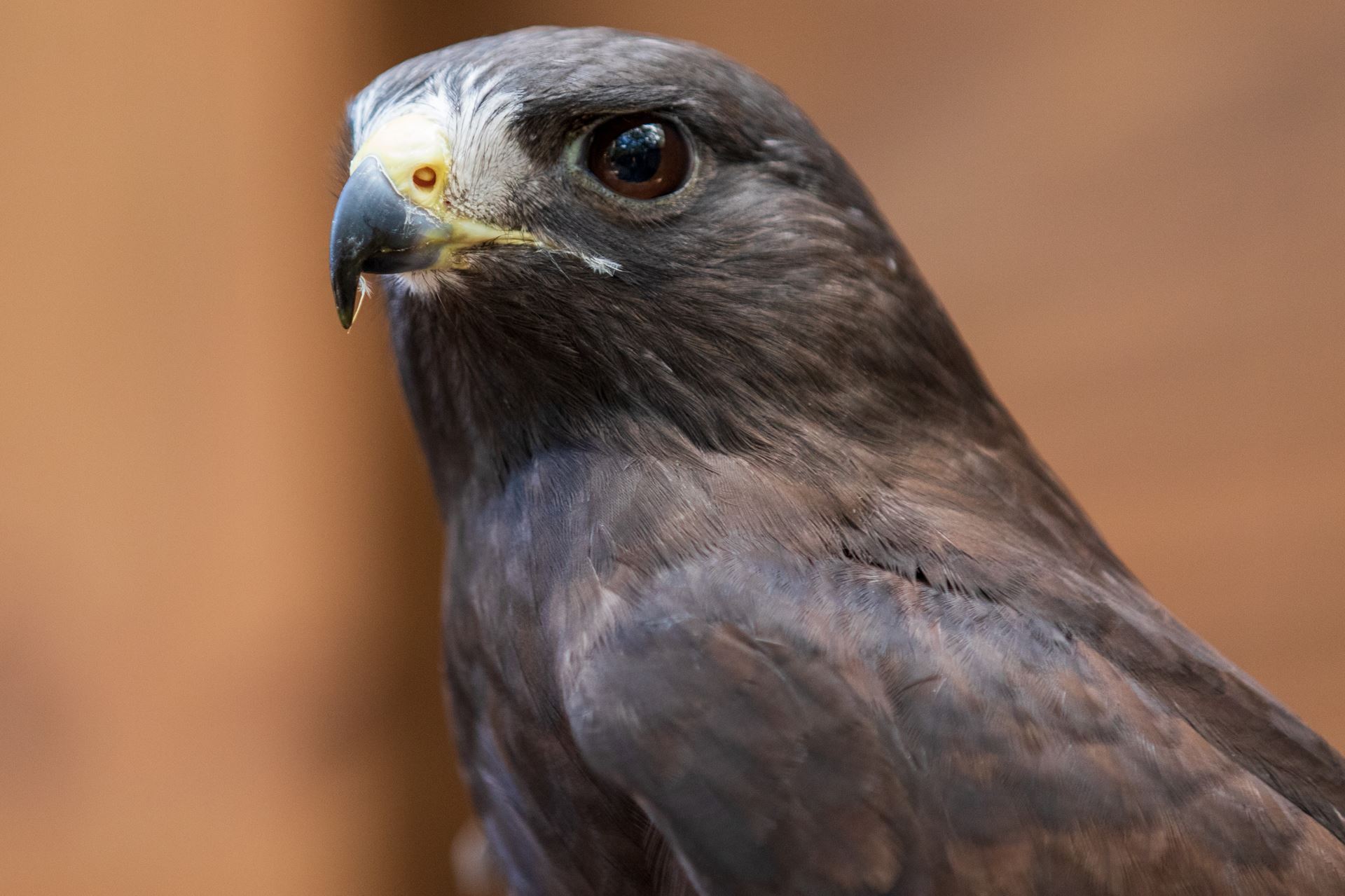
Short-Tailed Hawk
(Buteo brachyurus)
D’Artagnan, or “Dart,” for short, arrived in June 2021 with a permanent wing injury. Short-tailed hawks are not native to this part of Florida, but rather to south Florida, coastal Mexico, and much of South America. Dart is a dark morph more common in Florida, but in other areas short-tailed hawks can be found with a white breast coloring.